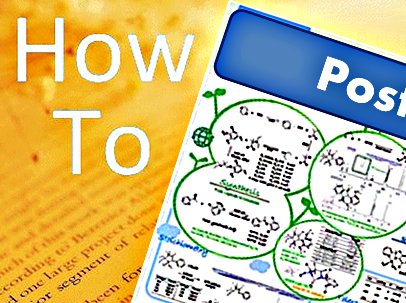Presenting posters and leading the conversation in a poster session can be intimidating. However, there are some very simple things that you can do to help yourself get through what can be a challenging experience. Richard Threlfall, Managing Editor, Asian Journal of Organic Chemistry, gives you some tips on how to plan and design an outstanding poster and how you can make sure that you present your poster like a pro.
Conference Abstract
The first thing that you’ll do for a conference presentation, be it a poster or a talk, is to write your abstract. A conference abstract is usually written months in advance of the actual presentation, which can be a help and a hindrance in deciding what to put in equal measure. The abstract also has to serve a number of purposes, including showing why you should be chosen to present at the conference, acting as an advertisement for your work in the abstract book, and attracting people to attend your talk or come to see your poster. Therefore, your abstract needs to give some solid and exciting results but also the impression that the work is still dynamic and ongoing, which means that people reading the abstract will only find out the really new stuff if they see your presentation.
The first and most important thing when you’re composing any type of presentation is to always consider who the audience is. In this case, the first readers of your abstract are the conference selection committee. Because they may have hundreds of abstracts to read, they will not be able to devote much time to each one, so make sure that your abstract is concise. (more information on this)
A very short introduction to your previous important results will help set the scene, but including too many of your own papers as references just looks like self-promotion, so be selective. A sentence about the wider background to your project may also be necessary if the session or conference has a general audience.
Keep abbreviations to a minimum and include something visual, such as an illustration or reaction scheme, to ensure there is something eyecatching. Choose your image carefully, making sure that it is as self-explanatory as possible and is understandable to who you expect the average conference attendee to be. Conferences usually have hundreds or possibly thousands of delegates, therefore, to make yourself stand out from the crowd, you might also consider including a small photograph of yourself with your abstract. This will give people the chance to connect your face with your work, which is a very powerful visual association.
An abstract for a journal submission should never be vague or leave the reader in any doubt as to the results of your work, but for a conference abstract a little bit of uncertainty can be a good thing if it is carefully crafted to spike a reader’s curiosity enough to attend your presentation. For example, you could specify some things that you reasonably believe you will achieve before giving the presentation but which you haven’t yet completed at the time of submitting the abstract. A sentence such as: “The latest results on the application of these materials in improving the efficiency of the redesigned solar cells will also be presented.” gives a general but tantalising hint that the reader will be the first to see your new results and this will have them putting your presentation right at the top of their “must see” list.
- Next month: Planning Your Poster
- All Tips for Your Poster
- Wonderlab Comic – Poster Session,
Sophie Lin,
ChemViews Mag. 2012.
DOI: 10.1002/chemv.201200133
Ever struggled to engage a student in a conversation at a poster session? Wonderlab explores some of the reasons why - Tips for Writing Better Science Articles




